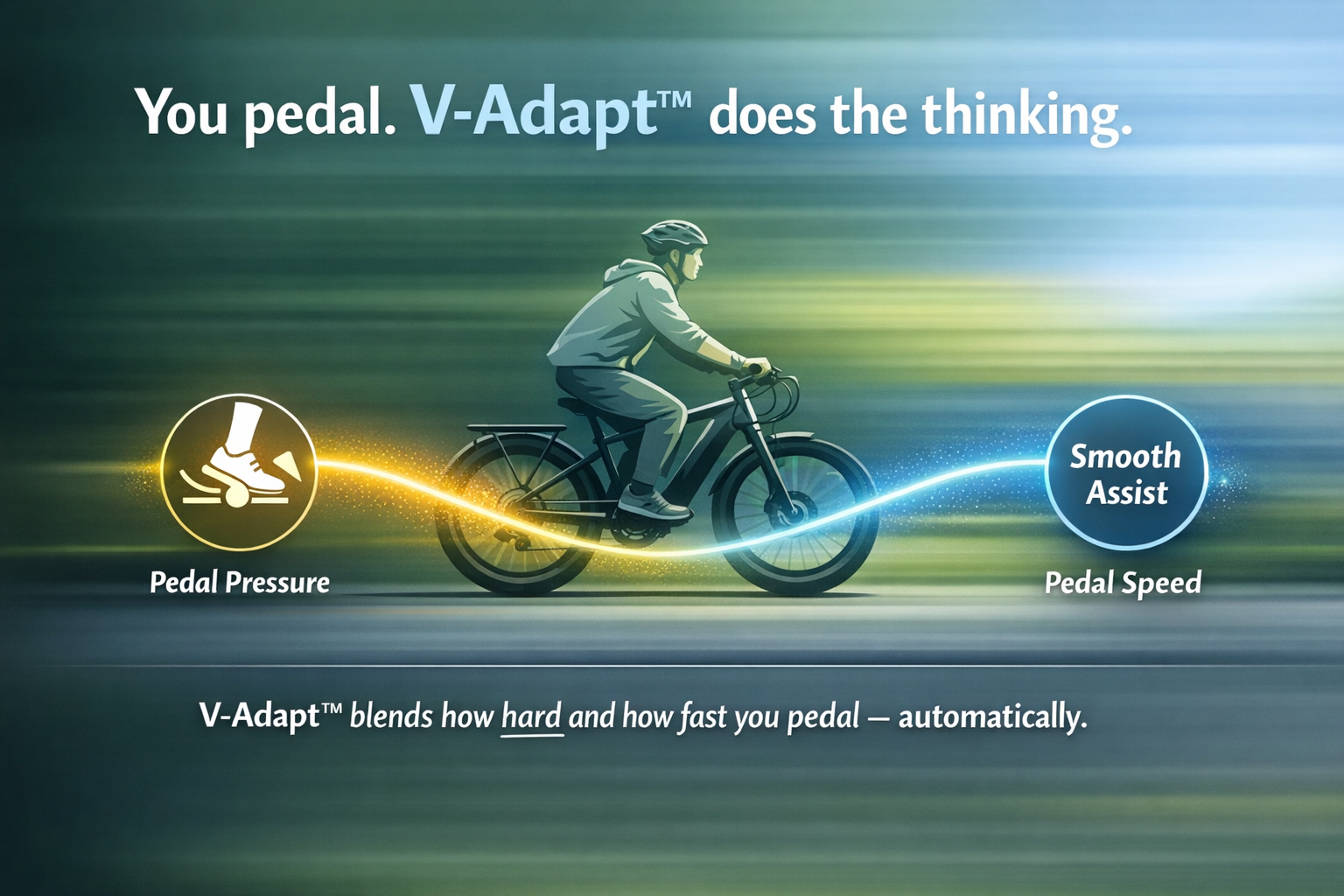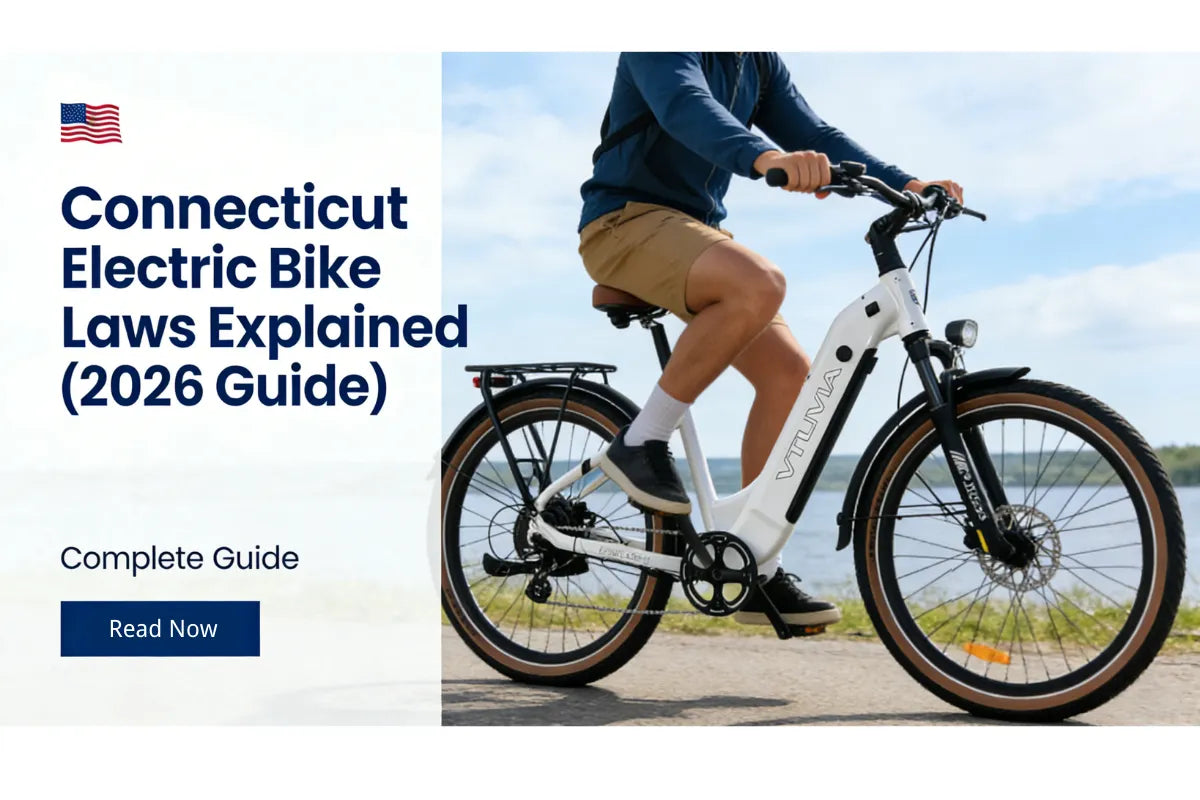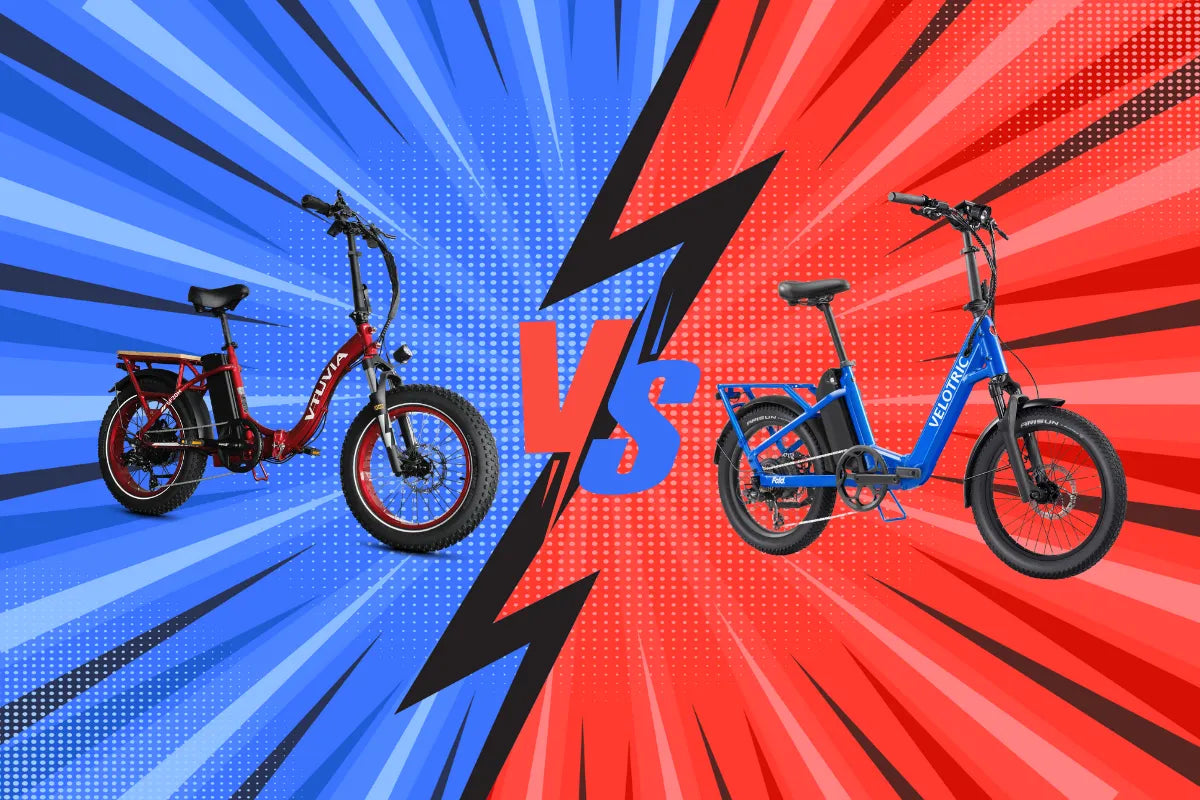An electric bicycle is a bicycle that uses batteries or an electric motor to assist in riding. Electric bikes have a simple essential structural impression, usually consisting of a standard bicycle frame, two wheels, and a battery.
The main feature of e-bikes is electric motors that drive the rear or front wheels to assist riding and expend a small amount of physical effort. Electric bicycles have been commercialized in Europe and the United States and are universal.
With the improvement of environmental protection awareness and the acceleration of urbanization, electric bicycles are becoming increasingly popular and an indispensable part of convenient human life.
Electric bikes have outstanding advantages that cannot be ignored:
- Environmentally friendly: E-bikes are zero-emission, meaning they run on electricity and produce no harmful pollutants. They are an excellent alternative to gas-guzzling vehicles that contribute to CO2 emissions.
- High-cost performance: Electric bicycles have a high-cost version compared to other means of transportation. They use less energy, which means they are less expensive to maintain. The cost of charging an e-bike battery is much lower than refueling a car or motorcycle.
- Good for your health: Electric bikes benefit from a traditional bike without strain and fatigue. The power assist feature enables users to ride longer distances and easily tackle hills and slopes. Regular e-bike use can improve cardiovascular fitness, reduce stress and help with weight management.
- Convenience: Electric bikes are ideal for quick commutes, especially in densely populated areas with heavy traffic. E-bikes have a top speed of 20 mph, can be used on cycle paths, and take up less space, making parking a breeze.
- FUN AND VERSATILE: Riding an electric bike is a fun and exciting way to explore, exercise, and commute. With many models and accessories available, riders can personalize their bikes for recreational riding, shopping trips, and commuting.
The laws, regulations, and standards of electric bicycles in various countries or regions are also slightly different. Electric bikes are a popular mode of transportation and activity in California. California has many great bike trails and famous rides.
Cycling events such as bike races and charity rides are also often organized. The local authority of California has specially formulated some regulations and policies to promote its development and, at the same time, increase the safety and convenience of its use and riding. The following are some content related to electric bicycles in California.
The California Vehicle Code, informally known as the Veh. Code, or CVC, is the section of the California Code that contains nearly all regulations about the operation, ownership, and registration of vehicles in California, USA.
The "Rules of the Road" referred to in California's local authority vehicle laws generally apply to the operation of vehicles, bicycles, and animals on public roads, except for provisions that, by their nature, do not apply. Vehicle laws also contain regulations from the California Department of Motor Vehicles and the California Highway Patrol.
According to California (CA) vehicle regulations, electric bicycles are divided into three categories:
- Class 1: Pedal Assist E-bike - This bike provides electric assistance when the rider pedals up to a maximum assist speed of 20 mph (about 32 km/h).
- Class 2: Throttle Assist E-bike - This bike has an electric motor controlled by a knob or button and can travel without the rider pedaling. It is easy for this type of electric bike reaches 20 mph.
- Class 3: Speed Pedelec - These bikes provide electric assistance when the rider is pedaling, up to a maximum assist speed of 28 mph (about 45 km/h).
Class 1 and class 2 e-bikes are slower, more controllable, and safer than class 3 electric bicycles; the law requires operators of Class 3 electric bicycles to comply with the following:
- Must be 16 years or older.
- Bicycle safety helmets must be worn.
- Passengers shall not be transported.
California law also requires that each electric bicycle can only be equipped with one electric bicycle motor of fewer than 750 watts (approximately one horsepower). If the motor is more powerful, the e-bike may be classified as a different type of vehicle, such as a motorized bicycle or electric scooter.
Additionally, riders must be at least 16 years old and wear a helmet when riding a Category 3 e-bike. There are different restrictions on using e-bikes on roads, bike lanes, and bike paths for other e-bikes.

If you are currently located in California and are an e-bike rider, knowing the local e-bike laws in California will help you ride safely and avoid fines.
VTUVIA E-Bike Product Card

VTUVIA SF20H Folding Electric Bike
- Motor: 750W high-power motor
- Batteries: 48V 15Ah
- Range: Up to 52 miles
- Throttle: Thumb throttle
- Frame: Aluminum alloy
California electric bikes have the following agerestrictions and registration requirements:
- Age Restrictions: To ride an e-bike in California, you must be at least 16 years old and wear a helmet when riding an e-bike. Those over 16 are considered adults and can ride e-bikes, subject to local traffic laws and regulations.
- Driver's License and Registration: Electric bikes do not require a driver's license or vehicle registration. However, the top speed of e-bikes is limited by California law: e-bikes should have a top speed of 20 mph or less.
If the top speed of an e-bike exceeds 20 mph, it is considered a motorcycle or e-scooter. It requires a driver's license, vehicle registration, and following relevant traffic rules and requirements.
- Safety Requirements: California law requires all e-bike riders to wear a proper helmet. In addition, electric bicycles must be equipped with working front and rear headlights and taillights to ensure safe riding at night or in low-visibility conditions.
California's safety regulations for electric bicycles are as follows:
- Helmets: Riders of all ages must wear standard helmets with masks when riding e-bikes.
- Lighting: In low-visibility conditions, California traffic regulations require all e-bikes to be equipped with headlights and taillights, and these lights must be used at night or in adverse weather conditions.
- Riding speed: The maximum speed of an electric bicycle should be below 20 miles per hour (or without power assistance, the human riding speed shall prevail). If this speed is exceeded, the e-bike is considered a motor vehicle and is subject to the rules and requirements of motor vehicles.
- Parking: Riders should not allow the act of parking an e-bike to interfere with traffic use of a driveway or pedestrian path.
- Anti-theft: To avoid theft of e-bikes, riders shouldlock the accessories and wheels on the bike.
When riding in California, ensure the safety of using this mode of transportation.
Restrictions and regulations on where electric bikes can be parked and where they can be ridden.
- Where to park: In California, e-bike riders are subject to the same parking rules as conventional bikes. That means e-bikes can generally be parked on bike racks, sidewalks (as long as they don't obstruct pedestrian traffic), and other designated bike parking areas.
However, it is important to check local ordinances, as parking rules and restrictions may vary from city to city. Additionally, e-bikes should not be parked in car parking spaces or on parking meters, as they may be towed or confiscated by law enforcement.
Some cities may also have specific rules about where e-bikes can be parked or restrictions on where e-bikes can be used, especially in parks and natural areas.
- Driving lanes: E-bikes can be driven on bike lanes, recreational trails, curbs, or shoulders. If an electric bicycle is to be conducted on a motor vehicle lane, it shall follow the rules and requirements of motor vehicles.
- Where to ride: According to California traffic regulations, electric bicycles can usually be driven on bicycle lanes or road shoulders and can also be driven on motor vehicle lanes by the rules of motor vehicle driving but cannot be driven on highways or speed-limited roads. The relevant agencies should mark prohibited areas.
In addition, if it isa folding electric bicycle, it can be carried on most public transport. Still, there are specific size restrictions and the need to comply with local public transport regulations.
In summary, in California, there are some restrictions and regulations on where electric bicycles can be parked and ridden, and local laws and requirements must be followed.
Riders should abide by traffic rules, choose a suitable parking place, and ensure electric bicycles will not hinder traffic or allow passengers to move freely.
Speed and power limits for electric bicycles are as follows:
- Speed limit: The top speed of an e-bike should be under 20 mph, whether in power-assist or electric-only mode. Above this speed, the e-bike is considered anelectric motorcycle or motorcycle and is subject to the appropriate motor vehicle regulations.
- Power Limitation: The rated output power of the e-bike motor should be under 750 watts. Above this power rating, an e-bike is considered a motorcycle or electric motorcycle and is subject to the appropriate motor vehicle regulations.
If you violate the electric bicycle laws in California, you may be fined accordingly.
Here are some common electric bicycle violations and related fines:
- Not wearing a helmet: All riders must wear a standard helmet in California when riding an e-bike. Failure to wear a helmet may result in a $25 fine.
- Exceeding the top speed: The top speed of an e-bike should be under 20 mph. If you exceed this speed, it may be considered an electric motorcycle or motorcycle, subject to the appropriate motor vehicle regulations, and you may be fined around $100.
- Driving in no-go zones: In California, e-bikes are generally allowed on bike lanes or the shoulder of the road but not on highways or roads with limited speeds. Driving in a no-go zone can result in a fine of around $100.
- Overloading or losing control: In California, e-bikes are limited to a maximum load capacity of 180 pounds (81 kilograms). You can be fined around $100 if overloaded or out of control.
- Not equipped with lighting: All e-bikes must be equipped with headlights and taillights in low visibility conditions, which must be used at night or in adverse weather conditions. If the e-bike is not equipped with lighting, it may be fined $25.
In California, it is also illegal for riders to drive electric bicycles after drinking alcohol, and will be punished accordingly.
Cyclists should follow traffic rules and stay awake when riding to ensure their safety and the safety of other traffic participants.Relevant regulations involving electric bicycles driven under the influence of alcohol are as follows:
- Alcohol Limits: In California, the alcohol limits for driving an electric bike are the same as those for driving a car. Their blood alcohol content (BAC) cannot exceed 0.08%.
- Drunk Driving Crime: In California, if a rider rides an electric bicycle after drinking alcohol, it is considered a crime to drive under the influence of alcohol, but the amount of fine and the level of punishment vary depending on the situation.
- Penalties: In California, the penalties for driving an electric bicycle under the influence of alcohol are similar to those for operating a motor vehicle under alcohol. In addition to fines and possible jail time, driving an e-bike while intoxicated can also result in a revoked or suspended driver's license.
In short, if you violate the corresponding regulations or laws for using electric bicycles in California, you may be fined accordingly. Failure to comply will not only affect the rider's safety but may also endanger the safety of other people and the vehicle.
As a means of transportation, electric bicycles can be improved in safety and reliability by proper maintenance and inspection.

There are some safety tips to be aware of when riding and operating an e-bike in different environments. In the meantime, some safety gear and precautions are recommended to ensure a safe ride.Here are specific tips for e-bike riders:
- Maintenance and inspection: Regularly check whether the parts of the electric bicycle are in good condition, such as brakes, tires, lights, accessories, etc., and repair and replace damaged components in time to ensure the operation and riding safety of the electric bicycle.
- Environmental safety: In harsh road conditions such as hillsides, coastal areas, and precipitation, special care should be taken to reduce the speed and prevent accidents such as slipping and falling. Choose safe routes and times to ride, and avoid rush hour and night driving.
- Safety equipment: It is recommended to choose appropriate helmets, gloves, shoes, and other protective gear for riding and wear brightly coloured clothes to improve the recognition of electric bicycles by other traffic participants. In addition, equipment such as bells or sirens can be added to increase riding safety.
- Preventive measures: abide by traffic rules and requirements, choose a suitable parking place, and ensure electric bicycles will not hinder traffic, or passengers can move freely. Keep your keys and electric bikes safe, and check and deal with abnormal sounds and vibrations in time to avoid accidents and theft.
Safe cycling should be considered a responsibility and obligation, and compliance with electric bicycle laws and regulations is imperative. If everyone follows these principles, e-bike riding will become more popular and safer.
Frequently Asked Questions About Electric Bicycles
1.Are e-bikes allowed on sidewalks in California?
In California, e-bikes can ride on sidewalks but must obey traffic rules and yield to pedestrians.
2. Do I need a driver's license to drive an electric bike in California?
A driver's license is not required in California to operate an e-bike. Still, regulations such as maximum speed, power limits for e-bikes, and restrictions on riding areas are needed.
3. Can e-bikes be ridden on bike lanes?
In California, e-bikes are allowed on bike lanes. Electric bicycles can also be driven on the road but must comply with motor vehicle rules and laws.
4. Are e-bikes subject to California's DUI laws?
Electric bikes in California are subject to DUI laws. Drunk driving is illegal, even with e-bikes.
5. Are there restrictions on where to park e-bikes?
Electric bicycle riders should pay attention to parking regulations when using bicycles as a means of transportation in urban and suburban areas. They should not park in car parking spaces or on parking meters. Cyclists should always park their bikes in designated areas to avoid potential fines and to respect other pedestrians and cyclists.
6. Do I need insurance for my e-bike in California?
Insurance is not a legal requirement for e-bike operations in California, but riders are strongly encouraged to have proper insurance to protect themselves and others.
7. Can I modify an electric bike to increase speed?
In California, modifying electric bicycles to increase their speed is forbidden.
8. Are there any additional regulations for e-bike rental companies?
For electric bicycle rental companies, there may be additional regulations and requirements in California; checking the relevant rental agreement and rules is recommended.
9. What are the penalties for violating e-bike laws in California?
In California, penalties for violating e-bike laws can include fines and the impoundment of the e-bike.
10. Are e-bikes allowed in California state parks?
In California state parks, there are some riding restrictions. Whether electric bicycles are allowed to ride in the garden also depends on park managers' evaluation and management regulations of electric bikes.






Share:
Unleashing the Power of Electric Bikes with Throttle and Pedal Assist: The Perfect Blend of Control and Efficiency
Ride an eBike on the Sidewalk Safely: Your Ultimate Guide - Vtuvia EBIKE